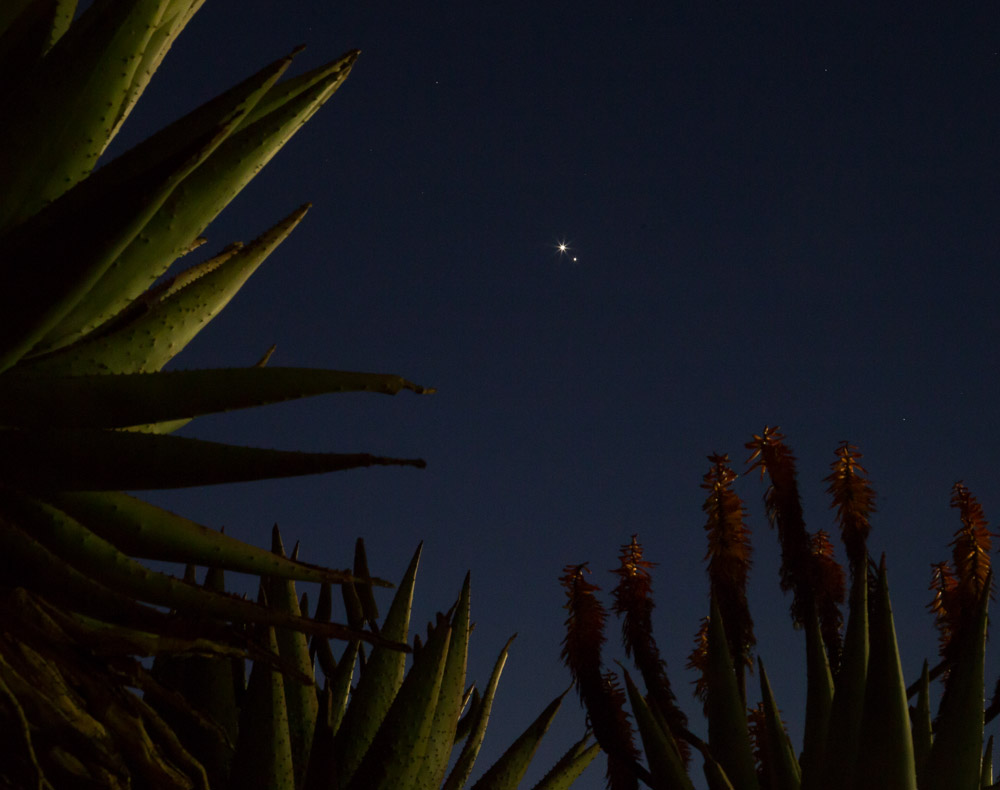
Atomic Oxygen Detected on Venus
New data provide direct evidence for the existence of atomic oxygen in Venus's upper atmosphere, enabling new science on our sister planet.

Explore the Night with Bob King
View the Thin Crescent of Venus
With Venus approaching inferior conjunction in August here's a foolproof way to follow its thinning crescent as the planet transitions from Evening Star to Morning Star.

85,000 Volcanoes Mapped on Venus
A new catalog pinpoints volcanic cones in the best available surface images of Venus – those gathered 30 years ago by NASA’s Magellan spacecraft.

Finally! Scientists Find Active Volcano on Venus
After decades of searching, scientists have finally found a clear sign of active volcanism on Venus.

Amateur Astronomers Help Provide Uninterrupted View of Venus’s Clouds
The newest observations will help astronomers understand a planetary-scale wave in the atmosphere of our sister planet.

The History of Venus in Air, Rock, and Water
Forty years ago, NASA's Magellan mission “closed the book” on Venus. Now, a new generation of astronomers think the planet next door deserves a second chance.

The Parker Solar Probe Captures Surprising Images of Venus Nightside
A visible glow from our sister planet’s nightside sheds new light on a 300-year-old observing enigma dubbed the “ashen light.”

Venus Farewell, Moonless Skies for the Quadrantids
Venus presents a stunning crescent at dusk before switching over to the morning sky early next month. After dodging the Moon for the Geminids, it's dark skies all around for the Quadrantid meteor shower.

The Case for an Active Volcano on Venus
After decades of studying Venus, many questions remain about our planetary next-door neighbor. One question has particularly intrigued astronomers: which, if any, of Venus’s 1,600 volcanoes are still active?

Two Space Probes to Pass by Venus (Update)
Two spacecraft are heading for a close Venus encounter: Solar Orbiter passes by on August 9th and BepiColombo on August 10th.

What Will ESA's EnVision Learn at Venus?
ESA's EnVision mission to Venus adds to the growing number of spacecraft investigating our sister planet. How will they work together to understand our sister planet'?

Venus Surface Is Fragmented Like “Pack Ice”
A new analysis of old data suggests that some of our sister planet’s unique surface formations are due to a “squishy” crust and an active interior.

We're Heading to Venus! NASA Selects Discovery-class Missions
After a hiatus of several decades, NASA is about to return to Venus in a big way.

Sights and Sounds of the Solar System
Spacecraft are returning sights and sounds from Venus, Jupiter, and beyond — here's a sampling.

Did Pioneer Venus Find Phosphine First?
NASA's Pioneer Venus mission, which launched in 1978, found the first tantalizing clues of phosphine, a potential biosignature gas — but it took 40 years to realize it!

Calling on Amateur Astronomers: Observe Venus!
The Mercury-bound BepiColombo spacecraft will fly by Venus on October 15th, and the mission is asking amateurs for their help.

Race to Venus: How We’ll Verify Phosphine
Confirming phosphine's presence on Venus is difficult from Earth . . . and that makes a good case for a mission to our sister planet.

Potential Biosignature Found in Venus’s Clouds
Astronomers might have found a potential indication of life in the clouds of Venus.

How Bright Are the Planets?
What do Venus and Jupiter have in common? Revisions to planets' magnitudes in this year's Astronomical Almanac have revealed some surprises.

See the Phases of Venus
If you have a set of binoculars or a telescope, watch for Venus’s thinning crescent over the next couple weeks.
